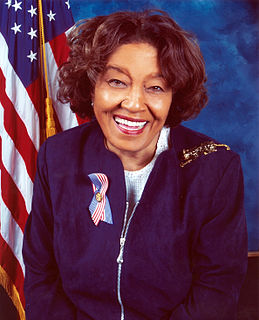
Julia May Carson, born Julia May Porter, was a member of the United States House of Representatives for Indiana's 7th congressional district from 1997 until her death in 2007. Carson was the first woman and first African American to represent the 7th District. She was also the second African American woman elected to Congress from Indiana, after Katie Hall.
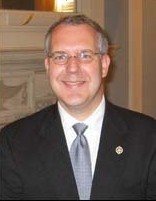
The Oklahoma gubernatorial election of 2006 was held on November 7, 2006, and was a race for the Governor of Oklahoma. The incumbent Governor, Democrat Brad Henry, was re-elected with more than 60 percent of the vote, beating Republican Ernest Istook, a member of the United States House of Representatives. As of 2019, this is the most recent election in which a Democrat has been elected Governor of Oklahoma.

The 2006 Texas gubernatorial election was held on November 7, 2006 to elect the Governor of Texas. The election was a rare five-way race, with incumbent Republican Governor Rick Perry running for re-election against Democrat Chris Bell and Independents Carole Keeton Strayhorn and Kinky Friedman, as well as Libertarian nominee James Werner. Perry was re-elected to a second full term in office, winning 39% of the vote to Bell's 30%, Strayhorn's 18% and Friedman's 12%.

The 2006 Georgia gubernatorial election was held on November 7, 2006. Incumbent Republican Governor Sonny Perdue ran for re-election to a second and final term as governor. Governor Perdue was renominated by the Republican Party, defeating a minor opponent in the process, while Lieutenant Governor Mark Taylor narrowly emerged victorious from a competitive Democratic primary. In the general election, though Taylor ran a spirited campaign, Perdue was aided by the increasing tendency of the state to vote for Republicans and by his popularity with the public; polling showed his approval ratings above sixty percent. In the end, Perdue was overwhelmingly re-elected as governor, defeating Taylor in a landslide.

The 2006 South Carolina gubernatorial election took place on November 7, 2006. Incumbent Republican Governor Mark Sanford was running for re-election against Democratic State Senator Tommy Moore and became only the third Republican governor in South Carolina to win a second term. Sanford started the campaign with a double-digit edge over Moore and he maintained that lead to election day. During the course of the campaign, Sanford's approval rating averaged in the mid fifties. In Sanford's re-election victory, he also garnered 22% of the African American vote, which was considered very high for a Republican statewide candidate.

United States gubernatorial elections were held Tuesday, November 4, 2008 in 11 states and two territories. Prior to the election, eight of the total seats were held by Democrats and five by Republicans. Two governors were prohibited by term limits from seeking re-election in 2008.
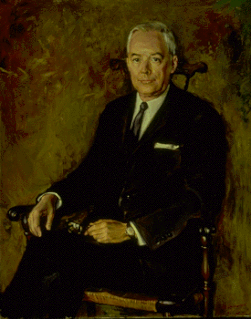
Roger Douglas Branigin was the 42nd governor of Indiana, serving from January 11, 1965, to January 13, 1969. A World War II veteran and well-known public speaker, Branigin took office with a Democratic general assembly, the first time since the Great Depression that Democrats controlled both the executive and legislative branches of the Indiana state government. Branigin was a conservative Democrat who oversaw repeal of the state's personal property taxes on household goods, increased access to higher education, and began construction of Indiana's deep-water port at Burns Harbor on Lake Michigan. During his one term as governor, Branigin exercised his veto power one hundred times, a record number for a single term. Branigin was the last Democrat to serve as governor of Indiana until Evan Bayh took office in 1989.

Joseph Simon Donnelly Sr. is an American attorney and politician who served as a United States Senator from Indiana from 2013 to 2019.

The Indiana gubernatorial election of 2008 was held on November 4, 2008. Incumbent Republican nominee Mitch Daniels was challenged by Democratic nominee Jill Long Thompson and Libertarian nominee Andy Horning. Daniels easily won reelection, defeating Long Thompson by over 17 points.

The 2004 Indiana gubernatorial election took place on November 2, 2004, to elect the Governor of Indiana.
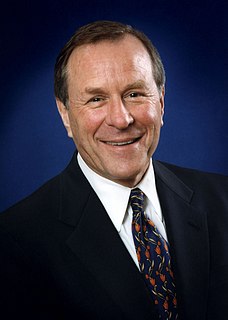
The 2002 Oregon gubernatorial election took place on November 5, 2002. Incumbent Democratic Governor of Oregon John Kitzhaber was unable to seek a third consecutive term as governor, therefore creating an open seat. To replace him, former Oregon Supreme Court Associate Justice Ted Kulongoski won a crowded and competitive Democratic primary, while former State Representative Kevin Mannix emerged from an equally competitive Republican primary. The campaign between Kulongoski and Mannix, who were joined by Libertarian nominee Tom Cox, was close and went down to the wire. Ultimately, Kulongoski eked out a narrow margin of victory over Mannix, which was slightly smaller than Cox's total vote share, allowing Kulongoski to win what would be the first of two terms as governor.
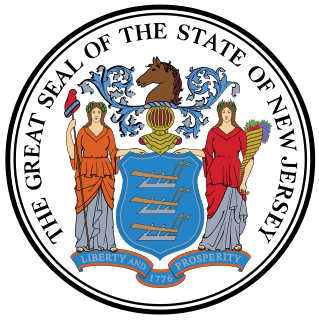
The 1997 New Jersey gubernatorial election was a race for Governor of New Jersey. It was held on November 4, 1997. In the Democratic primary state senator and Woodbridge Township mayor James McGreevey defeated pre-primary front-runner Rep. Rob Andrews by 9,993 votes. Although incumbent Republican Governor Christine Todd Whitman had a comfortable lead in polls in the run up to the vote, on election night she prevailed over McGreevey by a narrow margin of 26,953 votes (1.05%), a similarly narrow margin to her previous election. Whitman won 46.87% of the vote, with Democratic nominee James McGreevey receiving 45.82% and Libertarian Murray Sabrin receiving 4.7%.

The 2012 Indiana gubernatorial election took place on November 6, 2012. Incumbent governor Mitch Daniels was term-limited and unable to seek a third term. The Republican candidate, Congressman Mike Pence; the Democratic candidate, former Speaker of the Indiana House of Representatives John R. Gregg; and the Libertarian candidate, youth mentor, small business owner and reality TV personality, Rupert Boneham, were all unopposed in their respective primaries or conventions and contested the general election.

The 2012 United States House of Representatives elections in Indiana were held on Tuesday, November 6, 2012 to elect the nine U.S. Representatives from the state, one from each of the state's nine congressional districts. The elections coincided with the elections of other federal and state offices, including a quadrennial presidential election, an election to the U.S. Senate, and a gubernatorial election.

United States gubernatorial elections were held on November 8, 2016 in 12 states and two territories. The last regular gubernatorial elections for nine of the 12 states took place in 2012. The last gubernatorial elections for New Hampshire, Oregon, and Vermont took place in 2014, as Oregon held a special election due to the resignation of governor John Kitzhaber, while the governors of New Hampshire and Vermont both serve two-year terms. The 2016 gubernatorial elections took place concurrently with several other federal, state, and local elections, including the presidential election, Senate, and House elections.

The 1996 Indiana gubernatorial Election was held on November 5, 1996, alongside the election of both houses of the Indiana General Assembly. Incumbent Governor Evan Bayh, a Democrat, was ineligible to run for a third consecutive term due to term limits set in place by the Indiana Constitution. He was succeeded by Lt. Governor Frank O'Bannon, who won election over Republican Stephen Goldsmith with 52% of the vote.

The 1988 Indiana gubernatorial Election was held on November 8, 1988 in all 92 counties in the state of Indiana. Incumbent Governor Robert D. Orr, a Republican, was ineligible to run for a third consecutive term due to term limits set forth in the Indiana Constitution. In the general election, the Republican nominee, Lieutenant Governor John Mutz, was defeated by Democrat Indiana Secretary of State Evan Bayh by a margin of six percentage points. Bayh was the first Democrat to be elected Governor of Indiana since Roger D. Branigin's victory during the 1964 Democratic landslides twenty-four years previously.

The 2016 Indiana gubernatorial election was held on November 8, 2016, to elect the Governor and Lieutenant Governor of Indiana, concurrently with the 2016 U.S. presidential election as well as elections to the United States Senate and elections to the United States House of Representatives and various state and local elections. The primaries were held on May 3, 2016. Republican Lieutenant Governor Eric Holcomb won the race with 51.4% of the vote.






















